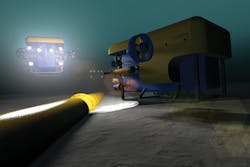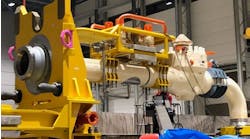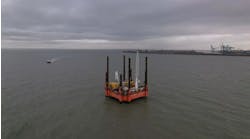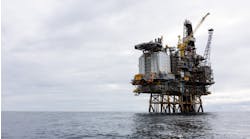Rolf Berge
Speedcast
In the offshore market of the oil and gas industry, monitoring pipelines can present a challenge as most of the equipment is below sea level. But it is not just the pipelines that need to be monitored. Interconnects, machinery, and other expensive equipment around the starting point for a pipeline also need to be inspected regularly. While certain technology like sensors can allow operators to monitor for malfunctions or discrepancies, instrumenting every foot of pipeline with these sensors is not an efficient or cost-effective solution. To provide maintenance to subsea pipelines and machinery, operators need to have a fair understanding of the conditions below sea level. This is where the capability for visual inspection is needed.
Visual inspection is the key in maintaining the health of underwater pipelines and machinery. However, it is not as simple as taking a snapshot of what the equipment looks like and calling it a day. Adding the dimension of time to footage can greatly improve monitoring ability. This capability allows operators to compare a fresh image of the pipeline with earlier shots, enabling them to predict when maintenance may be needed or highlight an area of pipeline or a piece of equipment that needs to continue to be monitored closely.
Video streaming and automated vessels
Companies like Speedcast work as system integrators with partner companies to provide the services of capturing imagery and footage through the use of Internet of Things (IoT) technology, integrating services into a full communications solution by providing connectivity so that the video stream can be a real-time, reliable feed. This enables the captured data, whether it is a video stream or data from sensors, to be sent to a central storage or processing facility.
Remotely operated vehicles (ROVs) and autonomous underwater vehicles are often used to gather footage of underwater sites. ROVs equipped with cameras and arms can be used to interact with objects under the sea in different ways and can follow the pipeline while capturing a video stream. This allows for real-time video streaming of the pipeline for customers that need to interact with something underwater or need to have an operator controlling the vehicle in real time.
Real-time video streaming can be extremely beneficial when it comes to maintenance, as operators need to capture what things look like in order to make decisions on when to schedule proactive maintenance rather than waiting and reacting only when something goes wrong.
Due to the massive expanse of some pipelines, many of which have miles upon miles to cover, pipelines typically have markings or numbers to differentiate between different sections. This helps the operator see which section of pipeline the ROV is monitoring.
With new technology, the video processing software can recognize the characters and translate and tag the video stream to indicate which section the video relates to. This is all processed in the cloud so that subsequent retrieval of that footage or imagery can then be easily tracked and indexed, enabling operators easy access and viewing of footage for specific areas when needed. This also allows operators to compare current or future data and imagery with that of video from six months prior and so on.
Character recognition, along with the ability to compare data and footage with past records, gives operators a great way of understanding the condition of the pipeline. In addition, by reviewing and comparing footage, they will have an idea of which sections of the pipeline differentiate from time to time and which areas might need to be watched to ensure the specific part, valve, or other equipment in question continues to function properly.
In addition to character recognition, other capabilities of cloud services include summarizations, time-lapse and hyper-lapse of videos, allowing operators to view miles and miles of pipeline in a few seconds, thereby condensing the whole process down while focusing on sections that look different from one sequence to the next for maintenance purposes.
Voice-over capabilities are also a great way to increase the effectiveness of footage. Operators can have an expert or professional do a voice-over while the ROV is following the pipeline and capturing footage, explaining what is being shown and highlighting areas of potential concern or that need to be watched for future monitoring. This speech can also be converted to text and tagged to the video for indexing purposes.
Cost benefits
The video gathered from these underwater vehicles is coded in such a way that clients can use a low-capacity link to decrease the need from full, high-definition resolution with 4 megabit (Mb) to 6 Mb capacity, down to 256 kilobit (Kb) capacity for transmitting all of the relevant data.
Additionally, video typically ranges from 2 megabits per second (Mbps) to 4 Mbps, but with clever encoding of that video through Speedcast’s solution, videos can drop as low as down to 512 kilobits per second. This can mean a vast savings in just connectivity costs.
In the future, it is expected that more video analytics could be applied to footage to the point that the software is able to apply suggested monitoring and maintenance scheduling, decreasing the need for an individual or personnel to review every inch of pipeline. This could not only reduce cost further, but also enhance crew safety as it would allow companies to remove unnecessary personnel from hazardous work environments.
Making use of the latest algorithms and processing of the cloud is a great example of how having an integrated product and using the powers of a cloud-based video processing system and real-time connectivity can be beneficial to the maintenance of offshore pipelines.




